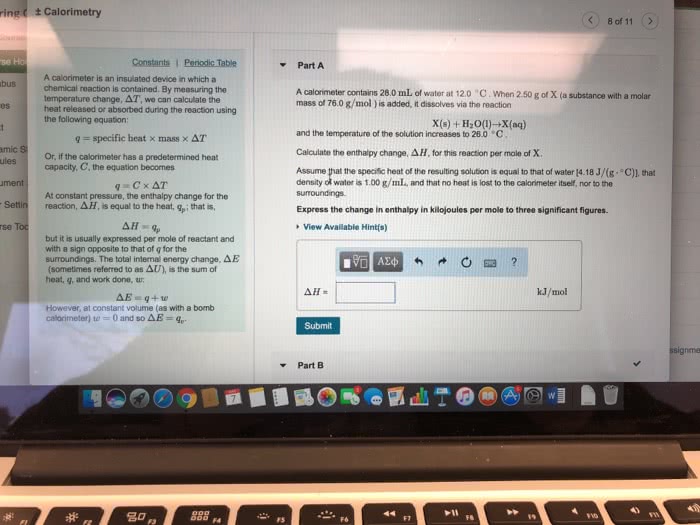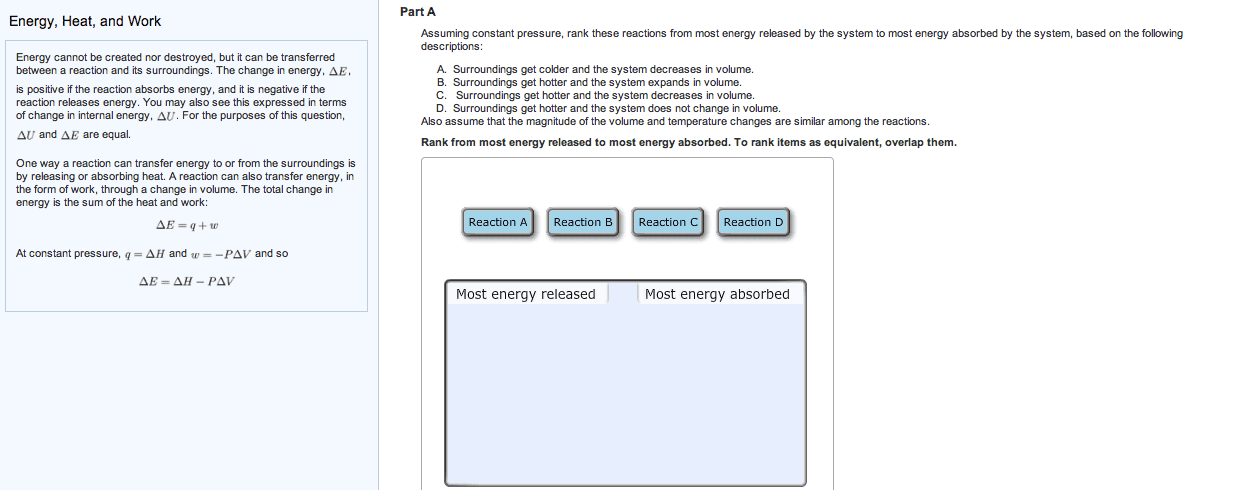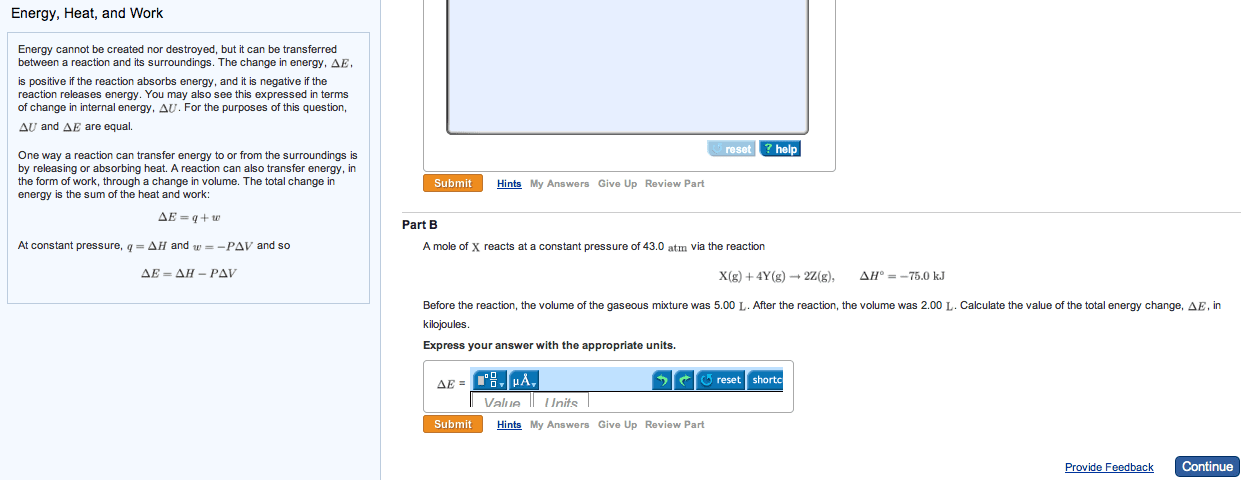CH 101 Lecture 25: Thermochemistry 2
24 views2 pages
24 Mar 2016
School
Department
Course
Professor
Document Summary
Because e = q + w, we can determine e by measuring q and w. In practice, it is easiest to do a process in such a way that there is no change in volume, so w = 0. At constant volume, change in e of the system = q of the system. In practice, it is not possible to observe the temperature changes of the individual chemicals involved in a reaction, so instead we measure the temperature change in the surroundings. Used to measure change in e because it is a constant volume system. The heat capacity of the calorimeter is the amount of heat absorbed by the calorimeter for each degree rise in temperature and is called the calorimeter constant. The enthalpy, h, of a system is the sum of the internal energy of the system and the product of pressure and volume. When h is -, heat is being released by the system.
Get access
Grade+
$40 USD/m
Billed monthly

Homework Help
Study Guides
Textbook Solutions
Class Notes
Textbook Notes
Booster Class
10 Verified Answers
Class+
$30 USD/m
Billed monthly

Homework Help
Study Guides
Textbook Solutions
Class Notes
Textbook Notes
Booster Class
7 Verified Answers




